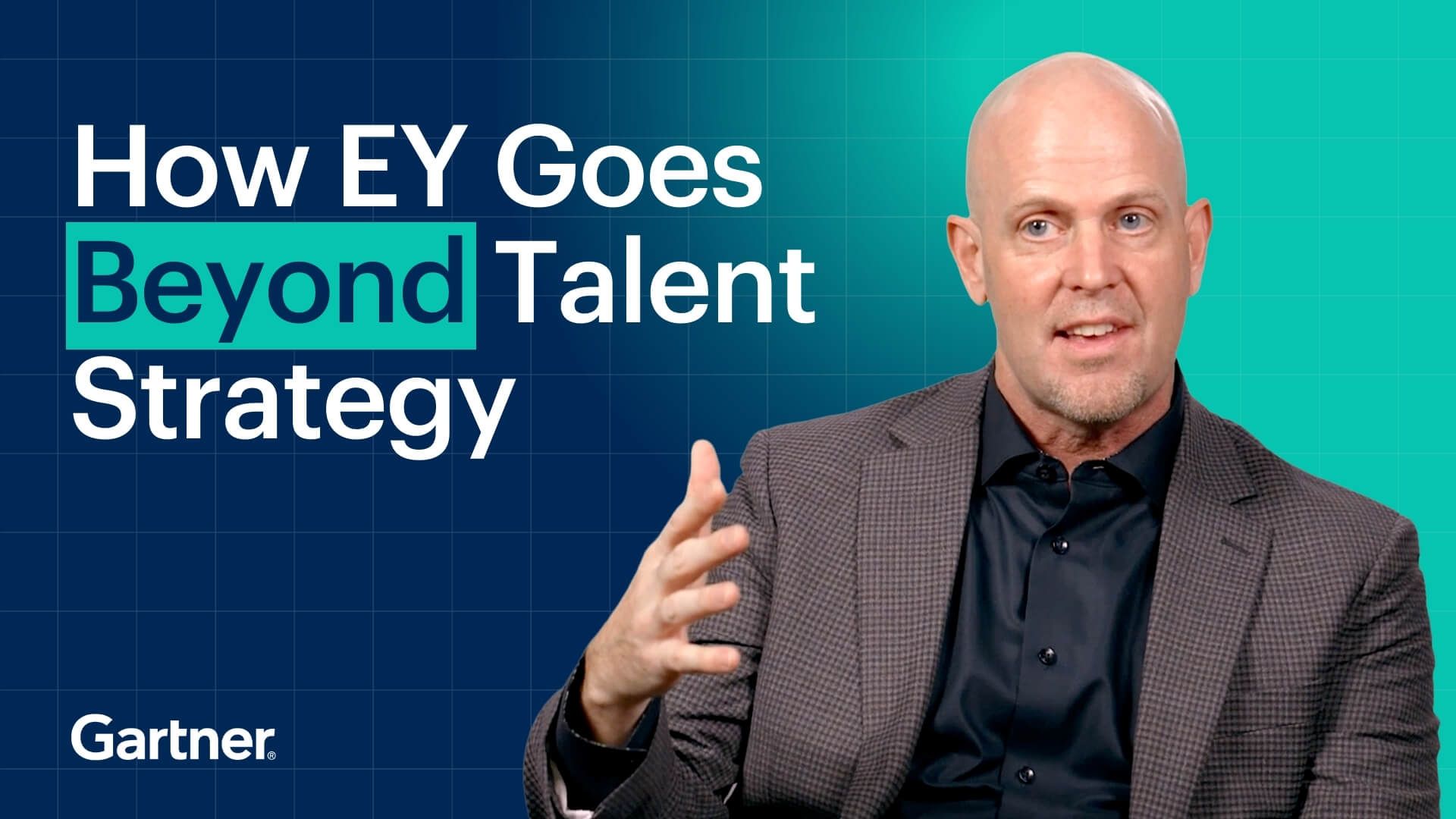Dan Black, Global Leader of Talent Strategy and Organizational Effectiveness at EY
I’ve been at EY for 30 years, but I’ve only been in this particular job for five months. And when I first started, it was Gartner that was a key resource to understand what else is happening in this new area of talent strategy.
How did Gartner set you up for success in your new role?
It seemed like every day I had something new and interesting that I was excited about or nervous about. And I could always go to Gartner to find out bespoke answers and research to help me navigate through what was a brand-new and challenging area for me. And I think that really is the advantage that Gartner brings to the table and to the market. It’s not a here’s a one-size-fits-all response. It’s, “Tell me about what you’re specifically experiencing. What’s the pain point? What’s the opportunity?” And then it’s going out and saying, “How can we bring our vast experience and network to bear on that specific thing that you’re thinking about?” And that is very rare in an organization this size, and it’s something that’s been a real windfall for me in this new role.
How did Gartner support your critical priorities?
One of my first orders of business was to better define EY’s talent strategy. People would ask me, “Does EY have a talent strategy?” And I would say, “No, we have a thousand.” Everyone has their own little bit of the strategy around the firm, and so I went to my Gartner consultants and said, “Hey, I need to make this, you know, one meaningful strategy.” And instantaneously it was, “Well, here’s how you go about that. Here are some structures and models you can use. Here’s what other companies do when they are defining their talent strategy.” And so in very real terms and in just a couple of months I was able to turn around and say to the board, “Here is our strategy. Here is our talent strategy.” And it was an amalgam of all the great stuff we were doing. But it was having the structure and then the confidence to be able to say, “This is what a talent strategy looks like. And I know that because it’s been done by all these organizations.”
How has HR’s voice in C-suite conversations evolved with Gartner?
A lot of people think of HR and talent as, oh, that’s, you know, it’s the softer, people side of the business, but with Gartner, it’s really helped me to go into meetings with the CEO and the board and say, “Well, actually, there’s good, hard data. There’s good financial data. There’s good progress that we can make beyond that soft side. This is tangible effects that you can see on the bottom line of the business.” So when we’re prioritizing where to invest, for example, in AI, investing in things that are going to be assistive to our employees, yeah, that’s a talent thing, but the bottom line is that’s going to generate more revenue, have more cost savings to the organization overall. So, it’s not that, kind of, soft, squishy, you know, your mom or dad’s HR person. It’s being able to go into the board with data, with the right information, to say, “Here’s how we’re going to impact the business in very real terms.”
How do you expect to leverage Gartner over the next two to three years?
One of the big value elements to being part of Gartner is that interest, that ability, to look around the corner, if you will. It seems like Gartner is always having conversations with members of this, you know, whether it’s CEOs or CHROs to what’s on their mind; what are they thinking about next? And those are things that — look, we’re very smart people here at EY, but having the — tapping into that resource of what everyone is thinking about, what might be on the minds of our clients, our customers, our competitors, really helps to broaden our aperture on what could be coming down the pike. And so that’s where Gartner has a lot of value. It’s not just validating the things we’re doing well. It’s helping us think about maybe the things we haven’t thought about yet and then getting in front of it for future success.
